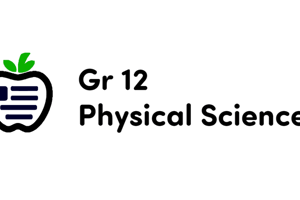Podcast
Questions and Answers
What type of reaction is being shown? (Br, H, B -> HB)
What type of reaction is being shown? (Br, H, B -> HB)
- SN1
- E2 (correct)
- E1
- SN2
What reactions could start with a carbonation intermediate formation in a two-step reaction?
What reactions could start with a carbonation intermediate formation in a two-step reaction?
- SN2
- E2
- E1 (correct)
- SN1 (correct)
What type of reaction is being shown here?
What type of reaction is being shown here?
- SN1
- E1
- SN2 (correct)
- E2
Which reaction type do you think is used to make 1-butanol?
Which reaction type do you think is used to make 1-butanol?
What main reaction do you think you will get if you mix 2-chloropropane with tert-BuO- in tert BuOH?
What main reaction do you think you will get if you mix 2-chloropropane with tert-BuO- in tert BuOH?
If the majority reaction product seems to be propene, which reaction do you think took place?
If the majority reaction product seems to be propene, which reaction do you think took place?
Which reaction type did the reaction follow if two available bases could produce the product?
Which reaction type did the reaction follow if two available bases could produce the product?
What do you think would happen if you added heat into the reaction?
What do you think would happen if you added heat into the reaction?
What would be the dominant reaction if you mix a secondary alkyl halide with a strong base?
What would be the dominant reaction if you mix a secondary alkyl halide with a strong base?
Which reaction conditions are most favorable for the SN2 type?
Which reaction conditions are most favorable for the SN2 type?
Which reaction conditions tend to favor SN1 and E1 reactions?
Which reaction conditions tend to favor SN1 and E1 reactions?
Flashcards are hidden until you start studying
Study Notes
Reaction Types Overview
- E2 reactions involve the simultaneous removal of a leaving group and a hydrogen atom, leading to the formation of alkenes. Example: Br, H, B → HB.
- SN1 and E1 reactions start with the formation of a carbocation intermediate, typically characterized by two-step mechanisms.
SN2 Reactions
- SN2 reactions are characterized by a one-step process where the nucleophile attacks the substrate, resulting in the displacement of a leaving group. Commonly seen in reactions forming 1-butanol.
- Favorable conditions for SN2 include the presence of a strong nucleophile and a primary alkyl halide.
E1 Reactions
- E1 reactions are favored under conditions involving a weak base and poor nucleophile, leading to carbocation formation followed by elimination.
- Mixing 2-chloropropane with tert-BuO- in tert-BuOH will predominantly yield an E1 reaction product.
E2 Reactions
- E2 reactions generally occur with strong bases and primary or secondary alkyl halides, resulting in the formation of alkenes.
- Propene is identified as the major product in a reaction indicated to have proceeded via E2.
- The common bases capable of facilitating E2 reactions can differ, demonstrating the versatility of this mechanism.
Influence of Heat
- The introduction of heat into a reaction will typically favor E1 pathways, emphasizing the role temperature plays in determining reaction outcomes.
Summary of Reaction Conditions
- Dominant reaction products from secondary alkyl halides and strong bases lean toward E2 mechanisms, highlighting the importance of substrate structure and base strength.
- Understanding the specific conditions that are favorable for either SN1 and E1 (weak base and poor nucleophile) versus SN2 (strong nucleophile, primary halide) is crucial for predicting reaction outcomes.
Studying That Suits You
Use AI to generate personalized quizzes and flashcards to suit your learning preferences.




